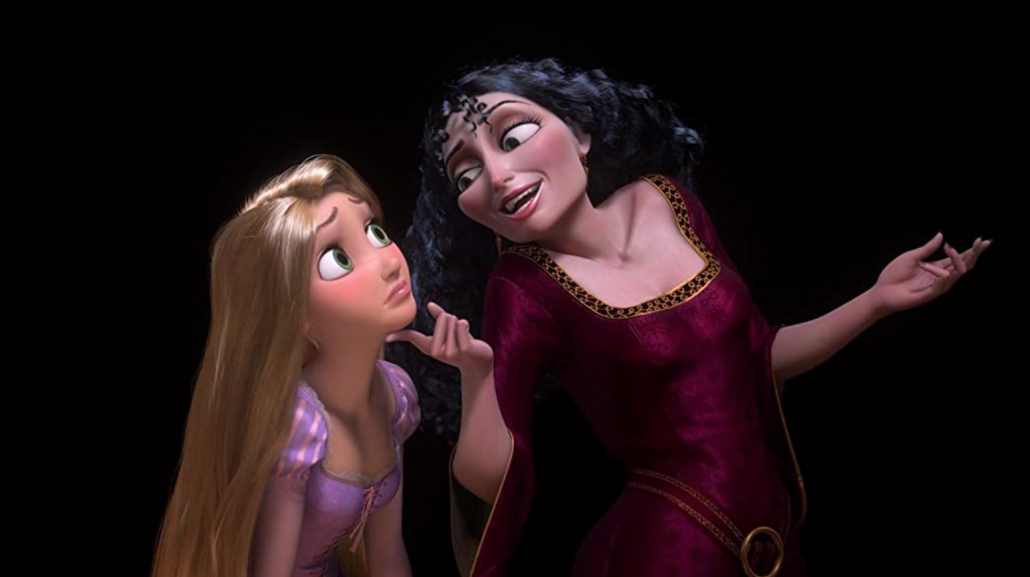Stardust: Disney dealing with manipulation

The Walt Disney Company, also known as Disney, is a U.S. multinational mass media and entertainment company known for its leadership in the animation industry. In many of their films, various adult topics such as gender equality and dealing with stereotypes have been the main focus, or at the very least, have been peripheral themes.
Many of these subjects have been portrayed through the relationships between the main characters and the villains in these films. Toxic relationships are represented by showing both the subtle signs and consequences of gaslighting and online catfishers.
These examples can be found in, “The Hunchback of Notre Dame (1996),” “Tangled (2010)” and “Frozen (2013).”
“The Hunchback of Notre Dame” revolves around the main character, Quasimodo, who was deformed as a baby and raised by Judge Claude Frollo, a minister of justice and the main villain in the story. Frollo only takes care of Quasimodo because of his religious beliefs; which does not stop him from naming Quasimodo after his deformity: hunchback.
Manipulation from guardians results in Quasimodo being tricked into believing Frollo truly cares for him. This type of manipulation is called gaslighting (making someone question their sanity or memories) and is done through tactics such as lying.
Frollo would constantly remind Quasimodo that he took care of him despite his deformity, even though the real reason was his belief that Quasimodo would be useful to him. Such manipulation can easily be executed as a result of Quasimodo being locked in and away from the world, relying only on Frollo’s words on how the entire world would be cruel to him. Frollo takes control of and limits Quasimodo’s outlook on life only for it to backfire on him in the end.
Some of the consequences of this mistreatment include Quasimodo’s lack of self-confidence as a result of Frollo’s actions. However, Frollo’s control of Quasimodo lessens when Quasimodo forms friendships with characters such as Esmeralda and Phoebus. These new friendships and Frollo’s manipulation result in Quasimodo finally expressing his rightful anger at everything Frollo has done.
In regards to toxic relationships from guardians, “Tangled,” takes a similar approach.
“Tangled” focuses on Rapunzel, a princess who, unknowingly, was kidnapped by Mother Gothel, an old woman who uses Rapunzel’s magic hair to make herself young. Like Frollo, Gothel gaslights Rapunzel through a variety of tactics. She tells Rapunzel lies about the dangers of the outside world, doesn’t let her leave, insults Rapunzel’s looks and maturity and ultimately scapegoats Rapunzel, taking none of the blame herself.
Some of the direct consequences that result from this are Rapunzel leaving in secret,putting Gothel’s plans in danger and l questioning her sanity away from home. Gothel begins to be more affectionate through her kind gestures but only because Rapunzel has something that will benefit her — magical hair. This villain is set up well to display the signs and dangers of gaslighting. Of course, not all manipulation comes from the guardian figures in films.
“Frozen” is a film that focuses on two princesses — Elsa, a recluse like Rapunzel and Quasimodo, and Anna, who is more extroverted. “Frozen” handles toxic relationships like “The Hunchback of Notre Dame” and “Tangled” but this time, it’s through Anna’s relationship with the twist villain, Hans, instead of a character who is withdrawn from everyone.
Throughout the film, even when the manipulator can’t lock their victim away, they can still feign love to take advantage of them. Hans, for example, is similar to online catfishers who only pretend to like someone so they can take advantage of them. The film also shows how such people can adapt their manipulative tactics to those who are more open, like Anna. In the song, “Love is an Open Door,” Hans states he wants to find his own place but gestures toward Anna’s kingdom rather than Anna herself.
When Anna learns the truth, she questions whether she would know what love is until reflecting on what her friends and her sister had given her. In essence, the film expresses how such things such as sisterly love can’t be forgotten while Hans is left with nothing in the end. A fitting punishment for his trickery.
Each of these films emphasize the various signs and issues of manipulation that happen in real life and should be taken into account even if the films themselves serve as somewhat childish means of entertainment.

